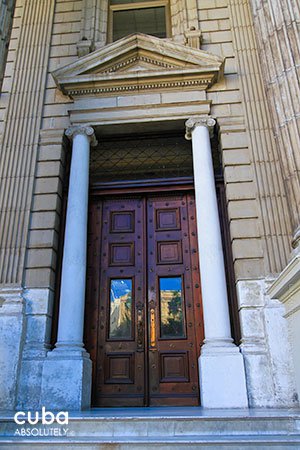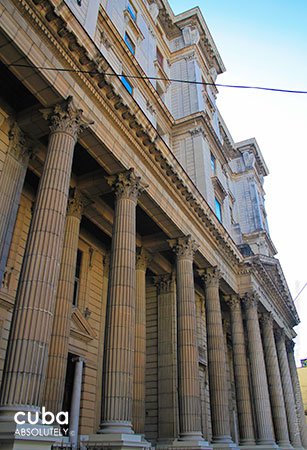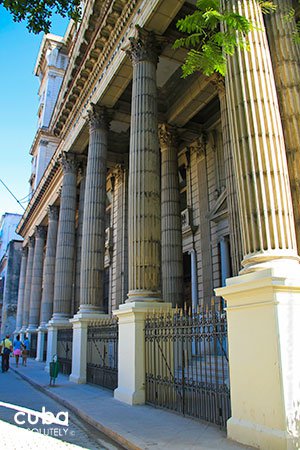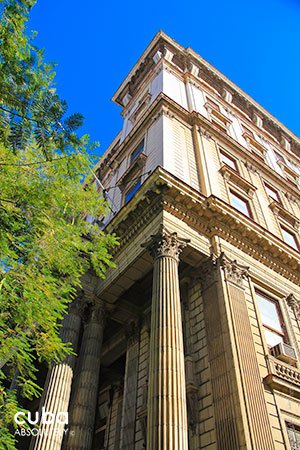This 1915 two-story building was made of reinforced concrete. Its façade was composed of elements of the Ionic order and stood out because of its semicircular portico and its beautiful wooden door, which was protected by a solid wrought-iron gate. The façade’s six large columns with imposing pedestals gave the building a monumental character, very much in keeping with its role. With the Cuban banking collapse, the institution, which from the start was under the control of the National City Bank of New York, was compelled to enlarge the building due to an increase in operations, and in 1922, the third floor was added. Today, it is an office building for the national Insurance Company.

Plaza de Armas LH  5+
5+
The early city was formally founded in 1519 on the northeast side of what would soon be laid out as Plaza de la Iglesia—named for the simple church that stood here until 1741, when it was destroyed fo …

Plaza de San Francisco LH  5+
5+
Right across Havana harbor, Plaza de San Francisco is one of the first three built in the 16th century. It takes its name from the Franciscan convent built there. The plaza became the site of a market …

Plaza de la Catedral LH  5+
5+
The last of the main squares to be created, this is one of Old Havana’s most beautiful spots. Originally, it was named Plaza de la Ciénaga (Swamp Square) because of its muddy terrain, but by the 18th …

Hotel Nacional de Cuba LH  5+
5+
In response to the increasing influx of American tourists in the late 20s (mainly those who were escaping Prohibition, in force in the United States at the time), the construction of a luxury hotel wa …
 Eclectic
Eclectic $61 - $81ROOMS: 426O esquina a 21
$61 - $81ROOMS: 426O esquina a 21 
The Malecón LH  5+
5+
The Malecón, first named Avenida del Golfo, is Cuba’s most famous sea-side avenue. The project was undertaken by Don Francisco de Albear, Cuba’s greatest engineer at the time. Albear came up with a co …
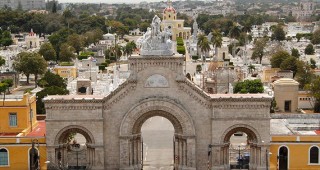
Necrópolis de Cristóbal Colón LH  5+
5+
History & architecture Declared National Monument in 1987, this is the most important cemetery in Cuba and its 57 hectares (10 acres) makes it the largest in America. According to Enrique Martínez …
 EclecticAdmission: CUC 1Open: 9am-5pm dailyZapata y 12
EclecticAdmission: CUC 1Open: 9am-5pm dailyZapata y 12 
Iglesia de Jesús de Miramar LH  5
5
Opened in 1953, this is Cuba’s second largest church, which is visible for several blocks due to its vast dome built in Roman-Byzantine style. The Jesús de Miramar church boasts 14 large mural paintin …
 OtherOpen: 9am-noon, 4-6pm daily; Mass: 9am Mon-Fri; 9am, 5pm Sat-Sun; To visit at other times, enter via the sacristy5ta #8003 entre 80 y 82
OtherOpen: 9am-noon, 4-6pm daily; Mass: 9am Mon-Fri; 9am, 5pm Sat-Sun; To visit at other times, enter via the sacristy5ta #8003 entre 80 y 82 
Catedral de La Habana LH  5+
5+
The entry of the Jesuits in Cuba was formally requested in 1656, and in 1727, a plot was granted for their school and church. Bishop Brother Gerónimo Valdés explained to the King of Spain that Havana’ …
 BaroqueAdmission: FreeOpen: 10:30am-3pm Mon-SunEmpedrado #156 e/ San Ignacio y Mercaderes, Habana Vieja
BaroqueAdmission: FreeOpen: 10:30am-3pm Mon-SunEmpedrado #156 e/ San Ignacio y Mercaderes, Habana Vieja 
Fundación Havana Club LH  4
4
One block southeast of Plaza de San Francisco, on Avenida del Puerto, stands the ochre-colored former mansion of the Conde de la Montera. Beyond its ornate doorway is a promotional center—the Museo de …

Factoría Habana LH  4
4
Factoría Habana is an experimental center for present-day artistic creation. The institution, which is ascribed to the City Historian’s Office, seeks to become a bridge between Latin American and Euro …
